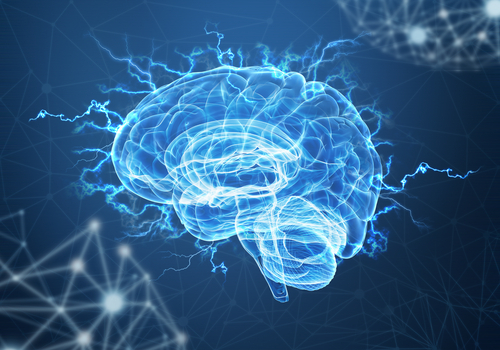TNM Device for Thermal Brain Stimulation Eases Motor and Other Symptoms of Parkinson’s, Small Trial Reports

Twice daily treatment with ThermoNeuroModulation (TNM), a non-invasive device for at-home use, provided sustained motor and non-motor benefits and was associated with high satisfaction in a small group of Parkinson’s patients on standard medications, a clinical trial reports.
The study based on its findings,“Caloric vestibular stimulation for the management of motor and non-motor symptoms in Parkinson’s disease,” was published in the journal Parkinsonism and Related Disorders.
Results of a previous study in a 70-year-old man with Parkinson’s found that daily use of caloric vestibular stimulation (CVS) eased both disease motor and non-motor symptoms by nearly 50%.
CVS, which stimulates the vestibular system, is self-administered via the portable TNM device, delivering thermal waveforms through ear pieces in a headset (37° \C–42°C to one ear and 37 °C–17 °C to the other, over about 19 minutes). Ears given the slow warming and cooling waveforms are switched every two days.
The vestibular system is a sensory network with diffuse pathways throughout the brain, and responsible for providing the brain with information about motion, head position, and spatial orientation.
Researchers in the U.K. and U.S. conducted a double-blind and randomized trial (NCT02703844) with 33 Parkinson’s patients to determine whether the TNM device, developed by Scion, could provide sustained and clinically relevant motor and non-motor benefits.
All were on standard anti-parkinsonian therapies, most frequently oral levodopa-based treatments. The median age of the 16 patients undergoing TNM stimulation (10 men, median 10 years since diagnosis) was 68. The remaining 17 patients received a sham (placebo) treatment.
Use of the TNM device for two months followed a four-week baseline period. Participants were further evaluated at five and 24 weeks after treatment. At each visit, the patients were assessed during “on” states – which refer to periods when anti-parkinsonian medications are effective — to judge changes in motor and non-motor symptoms, activities of daily living, and quality of life.
Compared to those on placebo, the 16 patients undergoing TNM showed significantly improved scores in the MDS-UPDRS Part I scale, which refers to non-Motor Aspects of Experiences of Daily Living. “Therapeutic gains for this assessment were greatest 5 weeks after the cessation of treatment although change scores at both time-points surpassed a previously established minimal clinically important difference,” the researchers wrote.
Similar benefits were observed in the Montreal Cognitive Assessment of cognitive impairment, MDS-UPDRS Part II — motor aspects of daily life activities — and Part III (motor exam), the Modified Schwab & England Activities of Daily Living scale, the 10-meter test of walking speed, the Timed Up and Go test of mobility and balance, and the MDS-UPDRS Part IV (motor complications).
Most of these benefits were attributed to lesser dyskinesia, or involuntary and jerky movements, and most levels returned to baseline (those at the study’s start) after six months.
Patients given TNM treatment were unable to correctly guess their study group, which the team partly attributed to difficulty perceiving the gradual improvements.
A total of 34 adverse events (AEs) were reported, 24 in the group undergoing TNM stimulation. The three serious AEs were deemed unrelated to the device. Four AEs — ear discomfort, dizziness/motion sickness and migraine — were considered possibly related to the device, and all resolved after the end of treatment. All other AEs were minor and thought most likely due to the disease.
Most, 25 people, found the device easy to use at home, while six had the opposite opinion but continued its use anyway. All but three found the time spent in treatment as “enjoyable” or “acceptable.” Twelve patients on TNM and 16 on placebo rated their overall experience with the device as “very positive” or “somewhat positive.”
“The results provide evidence that repeated CVS can provide safe and enduring adjuvant relief for motor and non-motor symptoms associated with [Parkinson’s],” the scientists wrote.
“One typically doesn’t see such consistency in study results when evaluating a new therapy,” Hubert Fernandez, director of the Cleveland Clinic’s Neurological Institute, who reviewed the data, said in a press release. “The fact that the gains observed were on top of the standard therapies is quite promising.”
Kallol Ray Chaudhuri, the medical director of the Centre of Excellence in Parkinson’s and Movement Disorders at King’s College, also considered the results “very encouraging.” Chaudhuri added that achieving benefits in non-motor symptoms “would be especially notable.” Such symptoms, he said, “are often untreated or poorly treated and have a particularly detrimental impact on quality of life, and their treatment is a key unmet need.”
“I am intrigued and want to see where this device technology might go,” Chaudhuri added.
The TNM Device 3.2 was cleared for marketing in the U.S. (ages 12 and older) and the E.U. (adults) for the prevention of episodic migraine. Parkinson’s patients may currently only use the device (TNM Device 4.0) in clinical trials.






